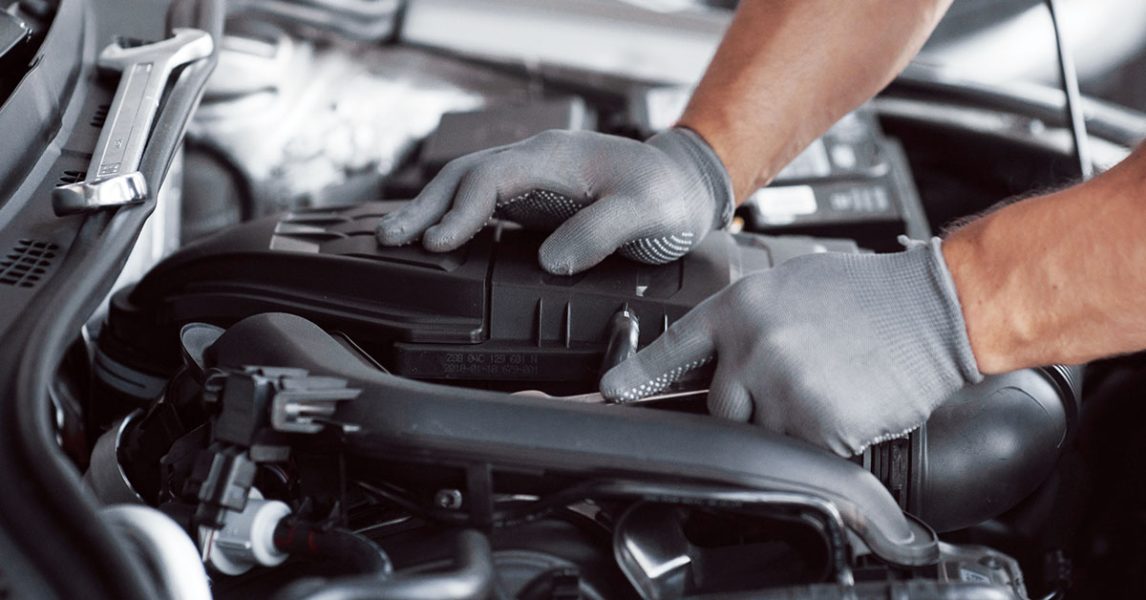
The four fundamentals of business vehicle management
For your fleetThe safe and efficient management of business mobility is at the core of what we do at SG Fleet, and it’s among the main objectives of our customers when they partner with us.
Our expertise and insights, developed over many years of leading the industry, tell us there are four key fundamentals that underpin safety and efficiency for overseeing business vehicles: fit-for-purpose, utilisation, maintenance management, and driver management.
While the growth of electric vehicles (EVs), hybrids and hydrogen-fuelled vehicles – along with rapidly developing new vehicle technologies – is changing what those responsible for vehicles need to weigh up when looking after mobility for their businesses, the fundamentals still apply.
Let’s explain these four fundamentals in more detail and see how they continue to relate to your management of business vehicles in this rapidly changing world.

1. Fit-for-purpose
In simple terms, fit-for-purpose means looking at the whole-of-life costs of a vehicle – then getting the right vehicle for the job, fitted with the right accessories, modifications, and after-market specs – at the right price. Fit-for-purpose decisions are important to nail because they have a significant impact on costs, efficiency, and safety – key influences on any organisation’s bottom-line.
Part of getting this right means having a thorough understanding of your vehicle’s operating environment. Will the vehicle be used mainly in built-up areas, or will it be in the bush, or even both? This understanding of the vehicle’s operating environment needs to be aligned with the operational tasks the driver and the vehicle itself will be performing daily. Then, as well as
understanding what the vehicle and its driver do, you need to ensure all the relevant WHS laws and regulations (load-bearing capabilities, axle weights, passenger numbers and so forth) are met.

The fit-for purpose equation now as an additional factor: EVs, FCEVs and hybrid vehicles. Because of the different drivetrains in these types of vehicles, and their design and engineering, it may limit how they can be modified from spec. It’s no longer a relatively straight forward apples-for-apples comparison; there’s more to know and learn about the design, running costs and adaptability to your business requirements.
At the simpler end of the analysis, some EVs can be heavier compared to other petrol cars in the same category. The carrying capacity can be different because of the variation in drivetrains and design, And with motors in different places, the ability to modify or customise fitouts for your cars may be different.
Custom fitouts for EVs, for those with very specific roles reliant on their vehicles, might come with additional costs and limitations. For example, can you fit bullbars to an EV or FCEV without drilling into the battery? Will adding cargo racks or toolboxes impact the vehicle’s efficiency and safety profile?
Furthermore, getting the right vehicle for the right purpose has productivity implications. For instance, even where operational tasks are the same, the vehicle selection may need to vary from driver to driver. A small hatchback is not going to be a great fit (literally) for a 200cm tall delivery driver, and not getting that right can have serious WHS implications.
2. Utilisation
When you finance a vehicle, you want to get maximum use out of it for your business. Under-utilised vehicles can seriously impact fleet efficiency and, conversely, over-utilised vehicles can seriously undermine safety. Ongoing monitoring of your vehicles and managing their utilisation is essential to efficient and safe fleet management.
When your car, truck or van is operational, how do you monitor and manage its use? What do you do when the usage requirements of the vehicle change? What processes and systems do you have to monitor, measure and report on vehicle utilisation?

As we all start transitioning to EVs and/or FCEVs in the future, we’ll need to consider utilisation from another perspective. For example, if maximum use means going into areas where the charging infrastructure isn’t very mature, are you running a risk? Are you giving an EV to someone who’s going to have to take it home? Do they have charging capacity at the home? Will battery recharging time impact its use? How will you monitor safe recharging, and account for any costs? These are all important considerations.
Make sure your fleet provider has the expertise to help you gather data on your fleet’s mileage, fuel economy (or charging data and infrastructure access for EVs), and maintenance and repair costs to give you the insights you need to get the most out of your business vehicles.
3. Maintenance management
Setting and managing a maintenance schedule that suits the vehicle and its use is an essential component of good business vehicle management and safety, as well as keeping your fleet’s whole-of-life costs as low as possible. At a minimum, manufacturer maintenance schedules should be adhered to, while customised fitouts or specialised vehicle use may
require a more vigorous service schedule. Your fleet provider should design service schedules for the specific vehicles under management and oversee the repair and maintenance work through a service supplier network – not to mention identifying improvement opportunities and developing strategies to improve efficiency and safety.

Maintaining EVs, hybrids or hydrogen vehicles is different to the petrol and diesel versions we are more used to. In the current landscape, the networks for servicing these new vehicles — and the people who have the equipment and the capability to service them — isn’t as developed as it is for ICE-powered cars and trucks. Think about where these vehicles will be operating, and if there’s the kind of service and repair networks around them to ensure they’re back on the road in a jiffy. If not, when will the manufacturer or dealer have them up and running? While the industry scales (and skills) up to meet these challenges, vehicle repairs and maintenance are important considerations in the transition away from petrol-powered cars.
4. Driver management
We know that more than 90 percent of serious injury and road fatalities comes down to human factors – distraction (often by mobile phones), fatigue, speeding, and being under the influence of alcohol or drugs.

Educating your drivers about safe driving habits, the limitations of the vehicles they’re driving, the different roads they’ll use, and the impact of speed plays a vital role in managing a safe fleet. It’s also imperative to maintain clear policies on elements such as mobile phone and vehicle use, and to promote positive driver behaviours. Offer regular driver training, either online or behind the wheel, and reward drivers for good behaviour.
Along with these considerations, there’s a good chance you’ll need a change management process for taking your drivers through the subtleties of driving new technology cars. EVs, for example, are a lot more powerful that ICE cars. Changing a tyre can be quite different in electric vehicles; there’s a specific way they need to be towed to avoid permanently damaging them; and there’s a lot of new technology at hand, which they’ll need to be familiarised with to be effective while behind the wheel.
In conclusion
Considerations around fit-for-purpose, utilisation, maintenance management, and driver management are the core fundamentals SG Fleet applies to achieve optimal efficiency and safety in business mobility as part of our strategic fleet consulting. You may feel you have a decent grasp of these fundamentals but, with the rise of new vehicle technology, it pays not to rest on your laurels. Vehicles are changing, and so should your approach to fleet management.
Start a conversation with SG Fleet today to apply these fundamentals to your business vehicle planning.
 Driving Insights
Driving Insights




